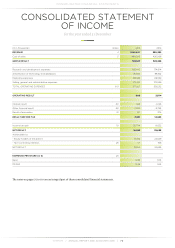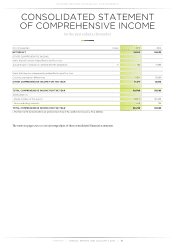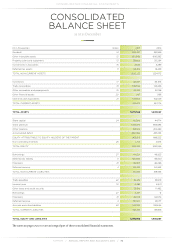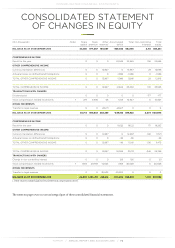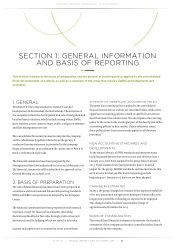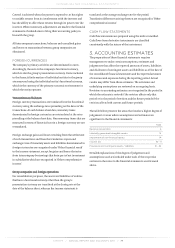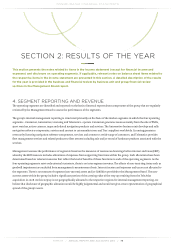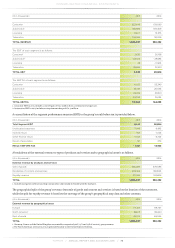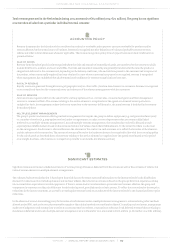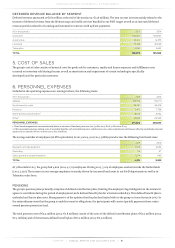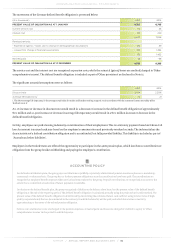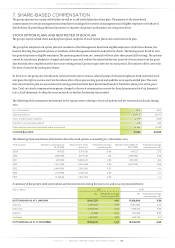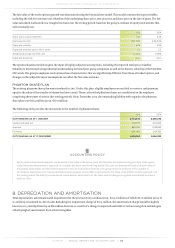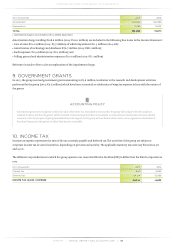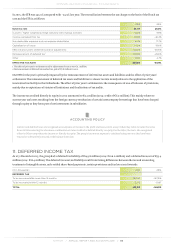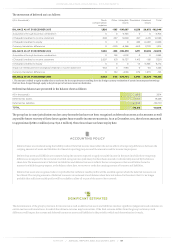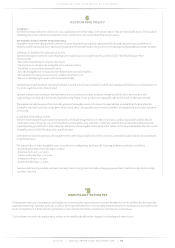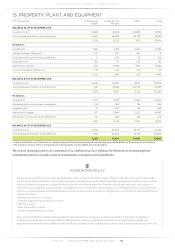TomTom 2015 Annual Report Download - page 81
Download and view the complete annual report
Please find page 81 of the 2015 TomTom annual report below. You can navigate through the pages in the report by either clicking on the pages listed below, or by using the keyword search tool below to find specific information within the annual report.
CONSOLIDATED FINANCIAL STATEMENTS
TOMTOM / ANNUAL REPORT AND ACCOUNTS 2015 / 80
Total revenue generated in the Netherlands during 2015 amounted to €65 million (2014: €74 million). The group has no significant
concentration of sales from a particular individual external customer.
ACCOUNTING POLICY
Revenue is measured at the fair value of the consideration received or receivable and represents amounts receivable for products and/or
services delivered in the normal course of business. Revenue is recognised net after deductions of estimated probable customer returns,
rebates and other similar allowances whenever applicable. The revenue recognition policy for each type of revenue or their combination is
presented below:
SALE OF GOODS
Revenue from the sale of goods is only recognised when the risks and rewards of ownership of goods are transferred to the customers, which
include distributors, retailers, end users and OEMs. The risks and rewards of ownership are generally transferred at the time the product is
shipped and delivered to the customer and, depending on the delivery conditions, title and risk have passed to the customer and acceptance of
the product, when contractually required, has been obtained. In cases where contractual acceptance is not required, revenue is recognised
when management has established that all aforementioned conditions for revenue recognition have been met.
ROYALTY REVENUE
Royalty revenue is generated through licensing of geographic and/or other traffic-/location-based content to customers. Revenue is recognised
on an accrual basis based on the contractual terms and substance of the relevant arrangements with the customers.
SALE OF SERVICES
Services revenue is generated from the sale of traffic and map update services, content sales, connected navigation and fleet management
services to commercial fleets. The revenue relating to the service element is recognised over the agreed or estimated service period on a
straight-line basis. In arrangements where devices are rented out to the customer in Telematics, the rental revenue is included in the revenue
from subscriptions.
MULTIPLE-ELEMENT ARRANGEMENTS
The group's product and services offerings include arrangements that require the group to deliver equipment (e.g. navigation hardware) and/
or a number of services (e.g. map update services) under one agreement, or under a series of agreements that are commercially linked
(referred to as 'multiple-element arrangements'). In such multiple-element arrangements, the consideration received is allocated to each
separately identifiable element, based on the estimated relative fair values of each identifiable element. To the extent that there is a discount
on the arrangement, the discount is allocated between the elements of the contract in such a manner as to reflect the fair value of the elements
and the substance of the transaction. The amount of revenue allocated to the hardware element is recognised in line with the accounting policy
for the sale of goods as described above. The revenue relating to the service element is recognised over the agreed or estimated service period
on a straight-line basis, which varies on average from 3 months to 48 months (for lifetime services).
SIGNIFICANT ESTIMATES
Significant revenue estimates include the estimates of various pricing allowances deducted from the revenue as well as the estimates of relative fair
value of various elements in multiple-element arrangements.
The estimated sales return deduction is based upon historical data on the return rates and information on the inventory levels in the distribution
channel. For sales incentives including channel- and end user rebates, the reduction in revenue is based on the group's historical experience, taking
into account future expectations on rebate payments. If there is excess stock at retailers when a price reduction becomes effective, the group will
compensate its customers on the price difference for their existing stock, provided certain criteria are met. To reflect the costs related to known price
reductions in the income statement, an accrual is created against revenue based on an estimate of the inventory levels in the channel and future price
reductions.
In the absence of a stand-alone selling price, the fair value of each element under a multiple-element arrangement is estimated using other methods
allowed under IFRS, such as the cost plus reasonable margin or the residual method or a combination thereof. In making such estimates, management
make use of judgement and assumptions to arrive at an outcome that best reflects a transaction's substance. Total deferred revenue balance relating to
the elements deferred under such multiple-element arrangements as at 31 December 2015 amounted to €106 million (31 December 2014: €85 million).


